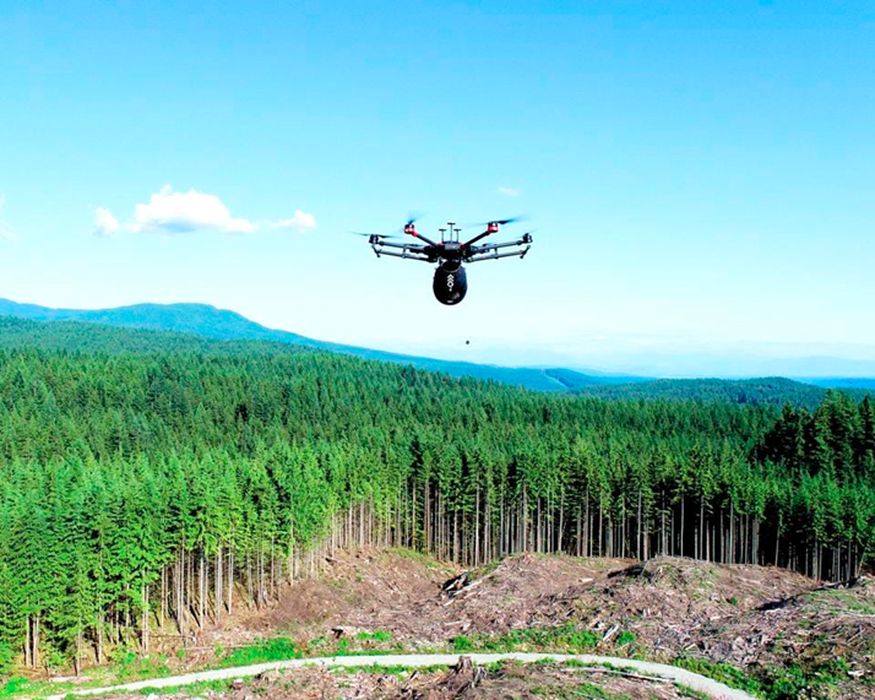
Charles R. Goulding & Andressa Bonafe propose using 3D printing to increase the ability of drones to perform reforestation activities.
Drones are changing the way we do many things, from video production to home delivery. Their contribution to reforestation, however, may come as a surprise. This unusual application is burgeoning in multiple places around the globe as innovative businesses make environmental initiatives more efficient and even profitable.
The Importance of Reforestation
The crucial role of forests cannot be understated. In fact, they are essential to life on Earth. Aside from being home to 80% of terrestrial biodiversity, forests provide a vast array of resources, including food, wood, medicine, and freshwater. Working as a “carbon sink”, forest trees and other plants help mitigate climate change by soaking up carbon dioxide and storing it away as they grow and thrive.
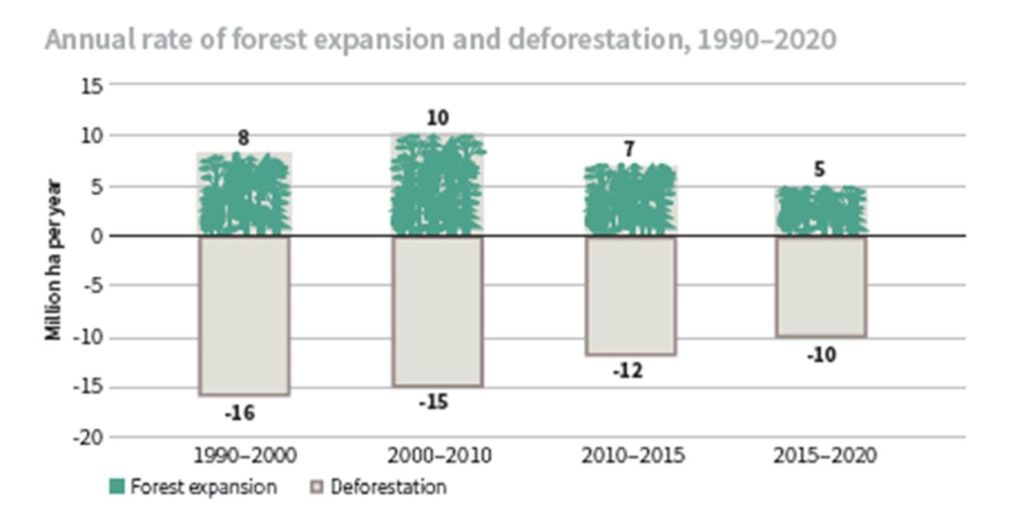
According to the Food and Agricultural Organization of the United Nations, an estimated 420 million hectares of forest have been lost worldwide since 1990. Even though the annual rate of deforestation is declining it remains unsustainable. Main threats include fires, clear-cutting for agriculture, ranching and development, unsustainable logging for timber, and degradation due to climate change. In this scenario, reforestation efforts stand out for their role in preserving wildlife, supporting local communities, and reducing the impact of greenhouse emissions.
Annual Rate of Forest Expansion and Deforestation
Innovative methods to recreate lost ecosystems are not only essential to fighting climate change but also represent a promising investment. The World Business Council for Sustainable Development (WBCSD) estimates an economic opportunity for bio-based products worth USD $7.7 trillion by 2030. In a report developed in collaboration with the Boston Consulting Group, the WBCSD foresees a major increase in the use of biomaterials to complement or even substitute conventional ones. This trend is expected to reach several product industries, particularly pharmaceutical, textiles, building materials, and packaging.
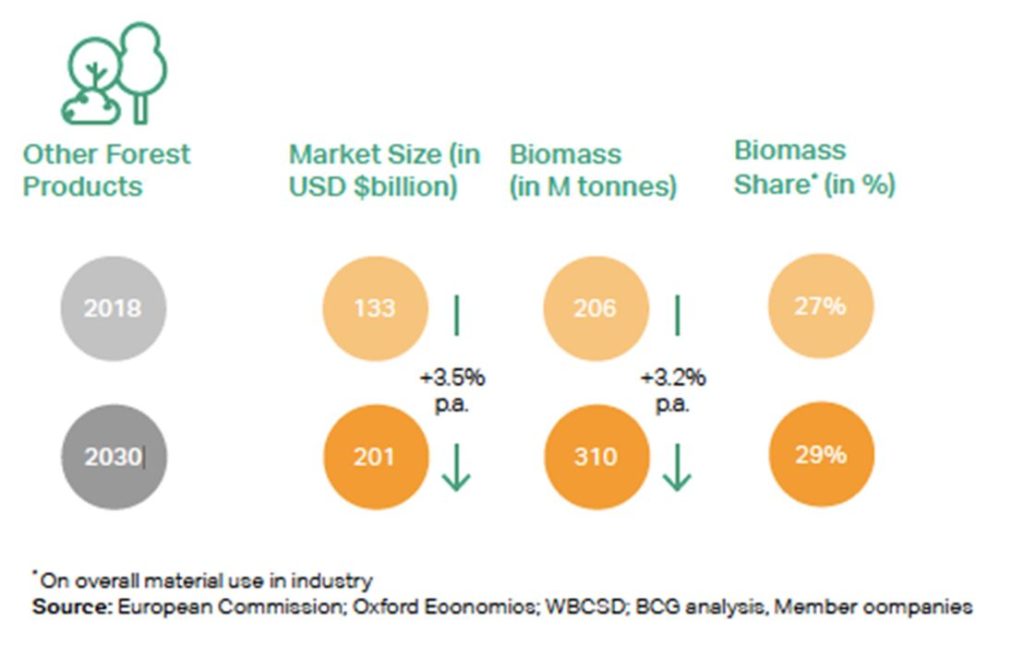
The Drone Reforestation Revolution
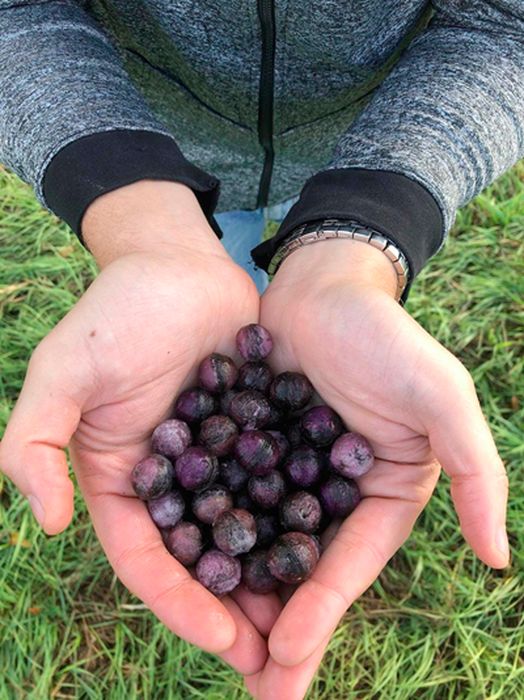
Despite the undeniable urgency of reversing forest loss, reforestation efforts have been slow and costly. In stark contrast with highly-automated harvesting technologies, planting trees remains an inefficient, labor-intensive task. Moreover, reliance on humans and heavy machinery has hindered access to certain terrains, particularly disaster zones.
In response to this urgent need for action, companies around the globe are using drones to revolutionize reforestation. Drone technology not only allows access to previously inaccessible areas, but also generates a ten-fold increase in the rate of planting at a fraction of the cost of traditional techniques.
Illustrating this global trend, a recent NY Times article featured the innovative endeavors of CO2 Revolution, a start-up that combines big data analysis and drone technology to plant millions of lab-enhanced seeds on deforested areas in Spain. Aiming to increase the rates of germination, the award-winning company coats its “iseeds” with a mix of plant extracts to protect against rodents; dried hydrogel to preserve humidity; fungi for enhanced defenses; and Bohemian truffle to foster root development.
Canadian start-up Flash Forest is also working towards efficient drone reforestation though with a slightly different strategy that relies on aerial mapping software, automation, and biological seedpod technology. The company has engineered nutrient-rich pods that house germinated seeds along with other species that support the targeted area, a fungus called mycorrhizae which helps plants to develop, fertilizers, and other “secret” ingredients.
Flash Forest’s efforts attest to the diversity of drone applications. Planting drones are equipped with a pneumatic device that shoots seedpods deep into the soil. After planting, spray drones are sent out to sprinkle the area with nutrients such as nitrogen to facilitate the growing process. Later, mapping drones are used to monitor their progress.
Australia-based Dendra Systems also uses mapping drones to collect in-depth data that inform seeding strategies. Specifically, the company relies on a combination of Wingtra and DJI M600 drones equipped with up to 22 kilograms of cutting-edge sensor technology. Survey data is used by machine learning algorithms to establish optimal seeding patterns, which are later carried out by custom Vulcan UAV drones.
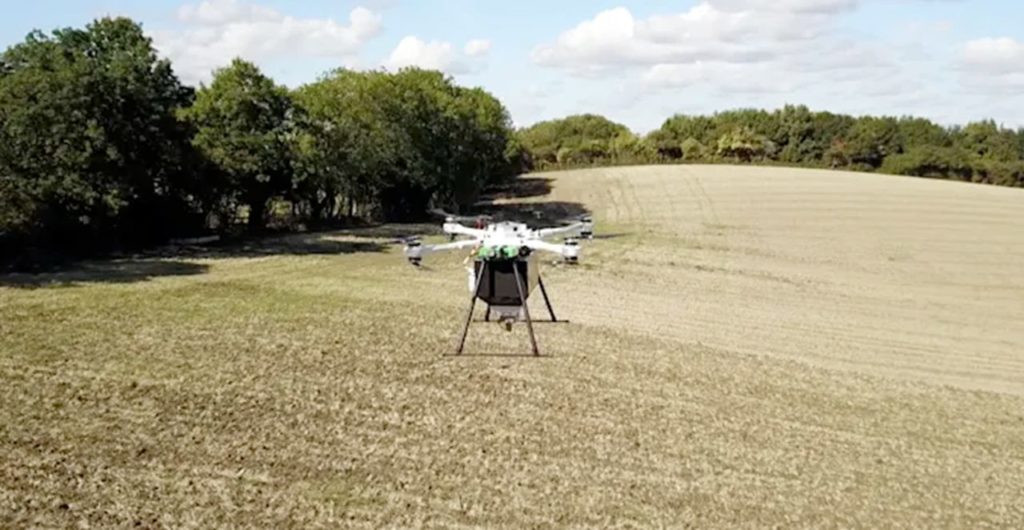
With flights that last up to two hours, Dendra estimates that a pair of operators flying ten drones can plant up to 400 thousand trees per day. Between 2014 and 2020, the company completed over 40 projects in 11 nations. Ongoing efforts include the enhancement of visual recognition AI and the development of more accurate carbon sequestration metrics.
Drones in the Amazon
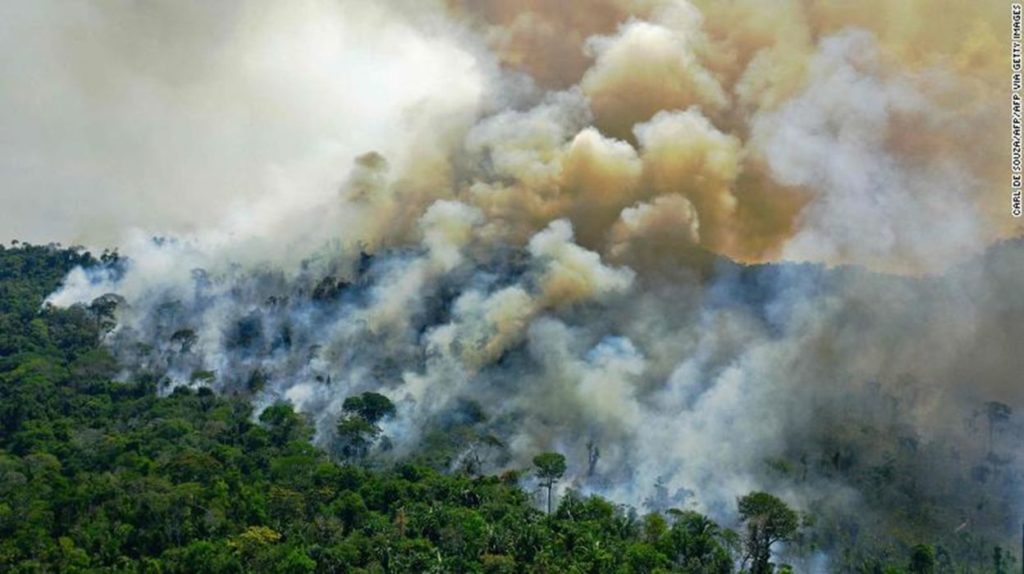
Drone technology is not only an asset for reforestation but it can also contribute to the preservation of protected areas. In partnership with the World Wildlife Fund (WWF) and Brazilian NGO, the Kaninde Ethno-Environmental Defense Association, members of the Amazon tribe Uru-Eu-Wau-Wau are using drones to document illegal activities that threaten the rainforest.
In 2019 alone, the Amazon lost an area the size of the Yellowstone (over 3,700 square miles) and had a surge of 30% in deforestation rates. Illegal fires intended to clear vegetation for farming and ranching are among the most dangerous threats. Drones allow native tribes to monitor areas that were previously hard to get around by foot. They are able to create high-resolution images, video, and GPS mapping data that serve as evidence against illegal loggers and land-grabbers.
3D Printing and Drone Reforestation

Additive manufacturing can be a great contributor to the advancement of drone-based reforestation. Drones rely on various lightweight components and accessories that can be more efficiently produced with 3D printing. In addition to reducing the cost and time needed for the production of replacement parts, additive manufacturing facilitates the creation and testing of prototypes that ultimately result in improved design and functionality. Increasingly common applications include 3D-printed propeller blades and guards, landing gear, and components of varying densities that better respond to aerodynamic needs.
3D printing not only enables the production of drone components but also facilitates the creation of innovative accessories that are key to reforestation. In New Jersey, Chrystoff Camacho has used 3D printing to build biodegradable, cone-shaped capsules specially designed to penetrate dry earth. Each 3D-printed packet is filled with mineral-rich soil, a fertilized seed, and nutrients. Once dropped from the sky, the capsule makes a conical imprint, creating space for growth. Chrystoff, who is the founder of forest management company ParaTrees, estimates that one drone can plant 150 seeds over an acre of land in 12 minutes for only US$35.
The Research & Development Tax Credit
The now permanent Research and Development (R&D) Tax Credit is available for companies developing new or improved products, processes and/or software.
3D printing can help boost a company’s R&D Tax Credits. Wages for technical employees creating, testing, and revising 3D printed prototypes can be included as a percentage of eligible time spent for the R&D Tax Credit. Similarly, when used as a method of improving a process, time spent integrating 3D printing hardware and software counts as an eligible activity. Lastly, when used for modeling and preproduction, the costs of filaments consumed during the development process may also be recovered.
Whether it is used for creating and testing prototypes or for final production, 3D printing is a great indicator that R&D Credit eligible activities are taking place. Companies implementing this technology at any point should consider taking advantage of R&D Tax Credits.
Conclusion
Bringing unparalleled efficiency to reforestation initiatives, drone-based solutions around the globe are helping mitigate climate change and reverse the loss of biodiversity. 3D printing can contribute to the success of these innovative efforts by facilitating the creation and testing of prototypes, increasing the efficiency of production of components and replacement parts, and opening the way for the manufacturing of unique accessories.
